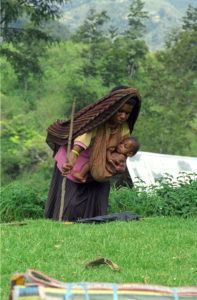In this year of 2020, while many of us are confined to our homes suffering the inconveniences of a global pandemic, millions of people globally are suffering starvation. Starvation numbers has risen over the last few years and are predicted to a new high with the effects of the Coronavirus pandemic in the poorest countries but also in territories in India, South Africa, Iran and Brazil. These are people just like us, parents battling to keep themselves and their children fed. This is the time to remember our common humanity and to provide relief for the worst hit communities and countries.
The 2020 Global Report on Food Crises, a joint multi-partner consensus-based assessment of acute food insecurity situations around the world by 16 partner humanitarian and community development organizations, showed that the number of people battling acute hunger and malnutrition is on the rise. The report released in early April 2020 showed numbers calculated prior to the Coronavirus pandemic. The report pointed to global conflicts as a major source of acute hunger as well as weather extreme occurrences and economic shocks. The report showed that 135 Million people in 55 countries and territories suffer acute hunger (that requires immediate and urgent action to curb the problem) and that 17 Million children in those countries are wasting from malnutrition, which is stunting their growth. The report mentioned COVID-19 and its expected impact to food availability and food access but data was missing at the time.
Later in April, The UN World food programme predicted that COVID-19 will double acute hunger by the end of 2020. Their latest forecast indicates an additional 130 Million people will be under severe hunger threat bringing total numbers (including aforementioned 135 Million of the 2020 GRFC report) to 265 Million people. David Beasley, executive director of the World Food Programme spoke to the UN Security Council urging world leaders to provide pledged aid immediately. Speaking to The Guardian on the issue Beasley said “This is truly more than just a pandemic – it is creating a hunger pandemic,”.
The food and land use coalition has issued a call to action addressed to world leaders requesting action in 3 main areas:
- Maintain open trade to keep the supply of food flowing across the world
- Scale support for the most vulnerable and ensure access to nutritious food for all
- Invest in sustainable, resilient food systems.
While the virus spreads in the developing world, unprepared healthcare systems will most likely crumble. Even if optimal weather and crop yields were expected for the year, affected populations may be restricted by access to work sites, sick workers unable to farm, shortages in supply chains and closed borders due to trade restrictions. However with locust spreading in eastern Africa, Yemen and Iran- we know that good crops will not be available for all and indeed aggravate the problem.
Global coordinated action is required to avoid a humanitarian crisis. Though many countries have pledged funds to keep their populations and economies going– very little worldwide coordination has been achieved, leaving countries requiring food imports in a bind.
Sources:
- 2020 GRFC Report- https://www.wfp.org/publications/2020-global-report-food-crises
- World Food Programme Insights https://insight.wfp.org/covid-19-will-almost-double-people-in-acute-hunger-by-end-of-2020-59df0c4a8072
- https://www.theguardian.com/global-development/2020/apr/21/coronavirus-pandemic-will-cause-famine-of-biblical-proportions
Image from the New York public library (on Unsplash) Migrant agricultural worker’s family. Seven hungry children. 1936. Photographer Dorothea Lange.
2nd image by photographer Beni Nissim taken in Indonesia.








